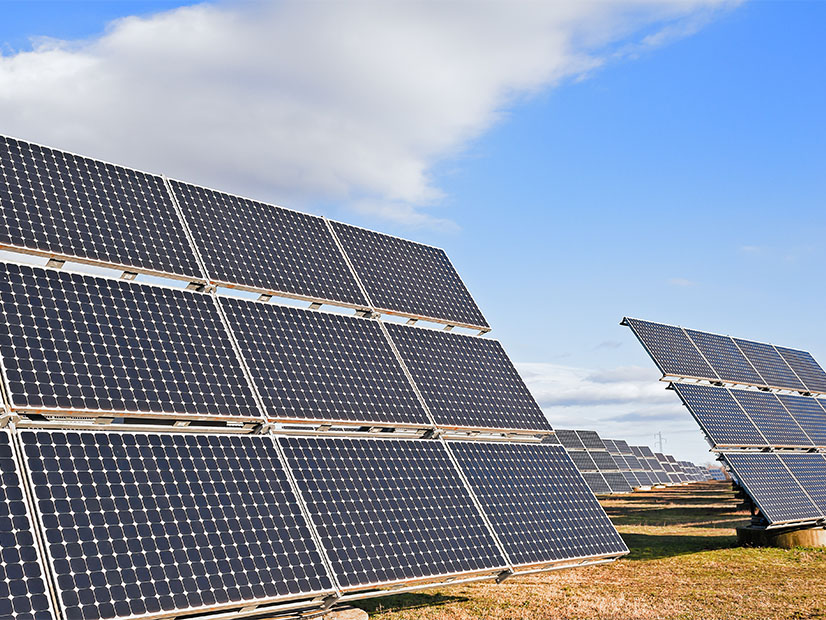
With the New Mexico legislature’s 2022 session scheduled to start Tuesday, the state has released a discussion draft of a bill that would set a statewide target of net-zero greenhouse emissions by 2050.
The bill, known as the Zero Emissions Economy Act, would also set an interim target for reducing GHG emissions by 50% below 2005 levels by 2030.
The New Mexico Environment Department (NMED) distributed the draft bill by email this week. Comments will be accepted through noon on Jan. 18 and may be sent to 2022act@state.nm.us.
The bill would allow the use of carbon offsets to help meet the 2050 net-zero goal. But even with offsets, GHG emissions would be capped at 10% of 2005 levels in 2050 and beyond.
This would “provide a check on absolute emissions to ensure they do not increase just because they are offset,” NMED said.
The bill would require the New Mexico Energy, Minerals and Natural Resources Department (EMNRD) and NMED to release an annual greenhouse gas inventory, showing progress toward reaching GHG reduction goals. Each year agencies would also assess the impacts of climate change on disadvantaged communities and whether new policies are needed to meet the GHG reduction targets.
NMED would have until June 30, 2025, to petition the Environmental Improvement Board to promulgate rules to lower GHG emissions from sources subject to the Air Quality Control Act.
Camilla Feibelman, director of the Sierra Club Rio Grande Chapter, said the group was still reviewing the draft bill. But she noted that the bill’s 2030 goal of reducing GHG emissions by 50% relative to 2005 levels was more ambitious than the 45% reduction that the governor set as a 2030 target in 2019.
Another positive is that the 50% reduction by 2030 would be actual emission reductions, without the use of offsets, she said.
“Taking real action to put greenhouse gas reductions in law … is essential,” she said.
In addition to the net-zero bill, Feibelman said she’s hoping to see a substantial “earth shot” investment in the state budget to drive a just transition on climate.
Steve Michel, deputy director of the Clean Energy Program at Western Resource Advocates, said WRA generally supports the bill.
“It’s moving us in the right direction, and it’s meaningful,” Michel told NetZero Insider.
Michel said he’d prefer a bill with more frequent benchmarks on the road to net zero, along with additional details on how to get there. And moving more quickly toward net zero would be preferable, he said, given the seeming acceleration of the climate crisis. Still, he called the bill an important step.
Governor’s Support
The state legislative session will run through Feb. 17. The focus of the 30-day session that takes place in even-numbered years is budgets, appropriations and revenue bills, as well as bills introduced at the behest of the governor — known as the “governor’s call.”
The bill is one of three that Democratic Gov. Michelle Lujan Grisham committed to including in her governor’s call during a two-day climate conference in October. The others are a bill that would establish a clean-fuel standard for transportation fuels and a hydrogen hub act. (See NM Draft Bill Would Encourage Hydrogen Buildout.)
In a January 2019 executive order, Lujan Grisham directed the state to join the U.S. Climate Alliance and set a goal for the state to reduce greenhouse gas emissions by 45% by 2030 compared to 2005 levels. The order also established an interagency climate change task force.
During the October conference, Lujan Grisham stressed the importance of codifying the GHG reduction targets into state law.
“If you don’t have that framework in statute, it’s too easy to not work as diligently or as quickly or as effectively,” she said.
The proposed legislation follows the failure of last year’s House Bill 9, the Climate Solutions Act. HB9 would have required “quantifiable and enforceable statewide greenhouse gas emissions reductions” of at least 50% percent below 2005 levels by 2030 and net-zero emissions by 2050. The bill stalled in committee.
Feibelman and Michel pointed to factors that might make this year’s Zero Emissions Economy Act more likely to succeed. The bill is much simpler than the Climate Solutions Act and has the direct backing of the governor, they said.



